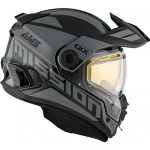Choosing the right motorcycle helmet is a critical decision that can significantly impact your safety on the road. Understanding the various safety ratings and standards is essential in selecting a helmet that provides the best protection. In this comprehensive guide, we will delve into the intricacies of motorcycle helmet safety ratings, helping you make an informed choice for your riding needs.
The Importance of Helmet Safety Ratings
Motorcycle helmets are subjected to rigorous testing to ensure they meet specific safety standards. These ratings provide valuable information about a helmet’s ability to protect your head in the event of an accident. By understanding the different safety standards and their implications, you can select a helmet that offers the highest level of protection.
Understanding Helmet Safety Standards
Several organizations worldwide establish safety standards for motorcycle helmets. Some of the most recognized include:
- DOT (Department of Transportation): This is the mandatory standard in the United States. While it ensures basic safety, it’s essential to consider additional certifications.
- SNELL Memorial Foundation: Known for its stringent testing, Snell-certified helmets are often considered to offer higher protection.
- ECE (Economic Commission for Europe): Widely recognized globally, ECE-certified helmets meet rigorous safety standards.
- SHARP (Safety Helmet Assessment and Rating Programme): This UK-based program provides star ratings for helmets based on impact, penetration, and rotational energy tests.
Factors to Consider Beyond Safety Ratings
While safety ratings are crucial, other factors influence helmet performance:
- Shell Material: Different materials like polycarbonate, fiberglass, and carbon fiber offer varying levels of protection and weight.
- Ventilation: Adequate ventilation is essential for rider comfort and preventing fogging.
- Fit: A properly fitting helmet is crucial for both comfort and safety.
- Visor Quality: A clear and scratch-resistant visor enhances visibility.
- Additional Features: Features like noise reduction, communication systems, and emergency release mechanisms can enhance the overall riding experience.
Choosing the Right Helmet
When selecting a motorcycle helmet, consider the following factors:
- Riding Style: The type of riding you engage in (sport, touring, off-road) will influence your helmet choice.
- Budget: Helmets vary in price based on materials, features, and brand.
- Comfort: A well-fitting helmet is essential for long rides.
- Style: Personal preference plays a role in helmet selection.
Conclusion
Investing in a high-quality, safety-rated motorcycle helmet is paramount for every rider. By understanding the different safety standards, considering additional factors, and exploring top-rated models, you can make an informed decision that prioritizes your safety and comfort. Remember, a helmet is your first line of defense, so choose wisely.

